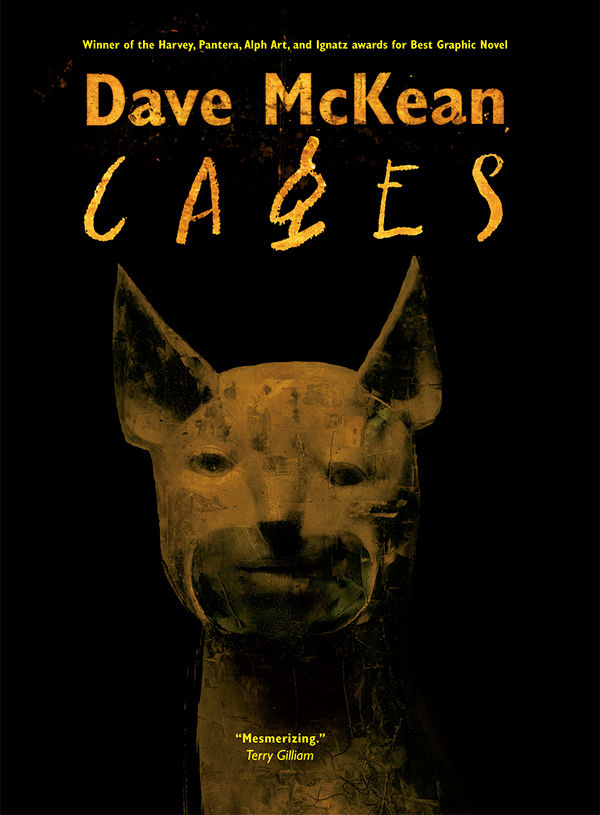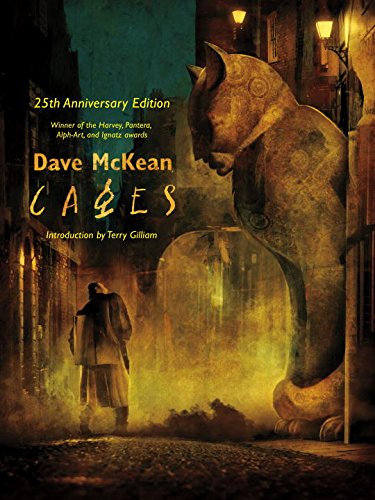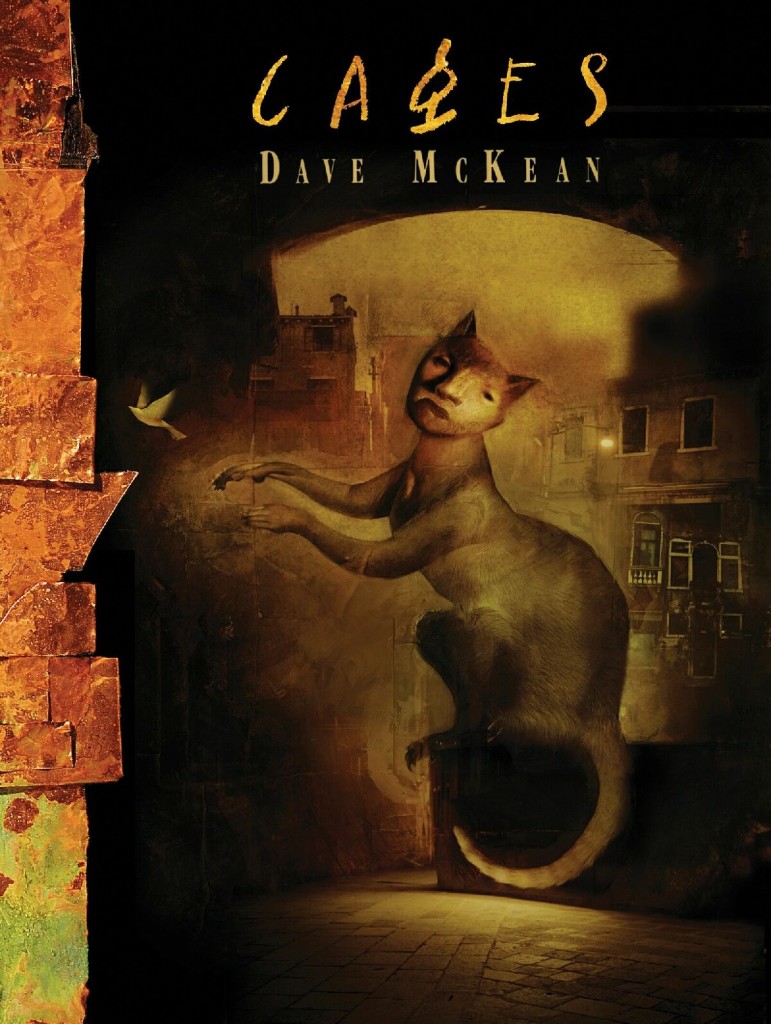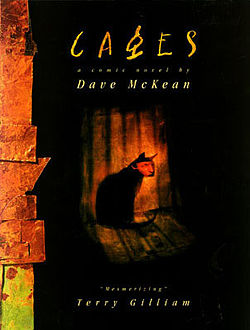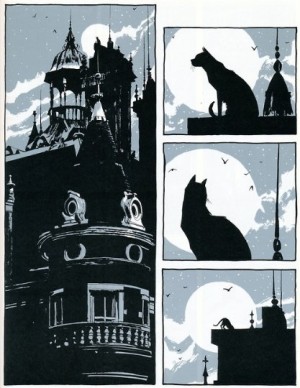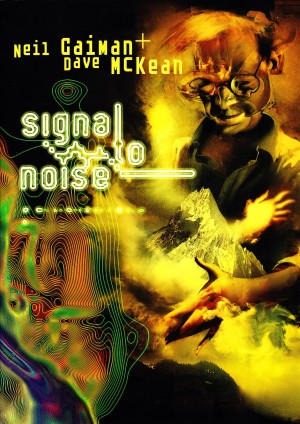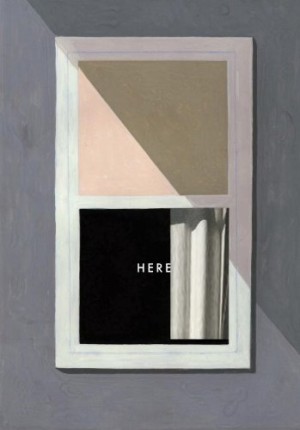Review by Allen Rubinstein
Having become known as the cover artist for Neil Gaiman’s Sandman series, Dave McKean struck out on his own with ten slowly-released issues of his highly-personal masterpiece, Cages. Issued during roughly the same period as Alan Moore’s From Hell, it was a time when the legitimacy of comics was still in question, and McKean pours strength after strength into his work, as if its 500 pages were meant to be read while walking up the Guggenheim. Cages is the quintessence of comics as high art.
McKean called Cages “About as close to describing my world view as I’m ever likely to get”. Jumping off the well-worn premise of a blocked painter, Leon Sabarsky moves into an apartment building surrounded by scaffolding (one of multiple cages the title refers to), having quit his job to focus on making art. He interacts with the daft landlady, a Jamaican jazz musician, a controversial novelist and a woman across the alley with whom he begins to build a romance. McKean simply wanders around this world, throwing narrative, artistic and magical realist curveballs at the reader. A fairy tale interlude here; a musical performance there; a scene of dry comic relief, a subplot among several street people, and a stray black cat who observes all.
Sabarsky and his new lady friend become involved with Cages’ strongest storyline, the Salman Rushdie-like writer whose recent novel, also called Cages, has brought public rage down on the heads of him and his wife, along with the sinister attentions of identical bald secret agents straight from the movie Dark City. The couple’s rush to freedom at the climax is similarly ambiguous in its events and meaning. Do not approach Cages expecting neat narrative closure.
The artwork is sophisticated and exquisite. Figures are raw and wrinkled, exhibiting a humanness just through the deliberately shambling line work. Pages are composed simply, until they’re not, as the panel grid can explode (sometimes literally) at any moment.
Since Cages was early and out of print for some time, it’s reputation has faded, and there are those who react negatively to its high-art pretensions. The story is dotted with surreal flourishes and goes into some long tangential episodes. It also reflects, in certain ways, outdated arts sensibilities from the early nineties. Still, you will miss one of the all-time great graphic novels if you pass on this one. It’s a book you need to take on its own terms, and give in to a world with a symbolic black cat, or where a room can morph into an outdoor forest for no reason at all or where novels can incite street riots.
Allowing Cages to work its magic will uncover a feast of treasures from an artist who communicates, as comics makers should, with visuals. A first conversation between lovers isn’t scripted out, but envisioned as sweeps of the brush, expressionistic shapes dancing around one another. A four-page sequence is created with still photographs and shimmering computer effects. Lovemaking is observed by God himself along with God’s pet cat.
Cages is the kind of singular work of art that the phrase “tour de force” was created to describe. It’s a stunning book, loaded heavy with beauty, mystery and pure creativity. The few blind alleys that McKean could probably have left on the cutting room floor don’t begin to compare to how much of the book works beautifully and contains a monumental vision of how far the medium could be stretched at a key period of its growth. It’s daring, challenging and an important work to catch up with.
